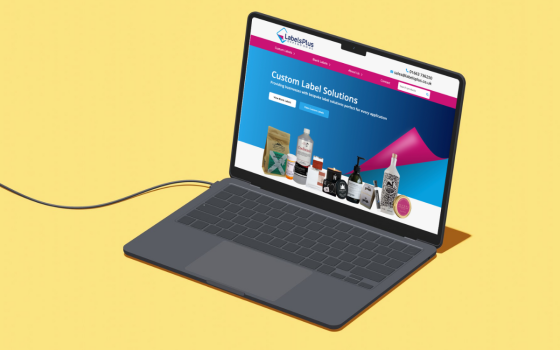Understanding audience segmentation
Audience segmentation is a marketing strategy where a large target audience is divided into smaller groups based on common traits or needs. The aim is to understand these groups better and customise marketing strategies to suit their specific preferences and requirements.
The rationale behind audience segmentation is that not all customers are the same; they have diverse backgrounds, interests, and purchase behaviours. By grouping individuals with similar traits together, marketers can create more personalised and relevant marketing campaigns that resonate with each segment. This, in turn, leads to higher engagement, better conversion rates, and improved overall marketing performance.
9 benefits of audience segmentation
Segmentation in marketing is of paramount importance as it enables businesses to effectively understand and target their diverse customer base. By splitting the larger target audience into smaller groups with similar traits, businesses can design custom marketing strategies for better results. Here are some key reasons why segmentation is crucial in marketing:
1) Personalization and Relevance: Segmentation allows businesses to deliver personalised and relevant messages to each customer segment. Tailoring marketing content to meet specific needs and interests boosts customer engagement and positive responses.
2) Improved Customer Engagement: By catering to the unique preferences and requirements of different segments, businesses can enhance customer engagement. When a brand understands customers’ needs, a stronger connection is formed.
3) Enhanced Conversion Rates: Tailored marketing strategies increase the likelihood of converting leads into customers. When marketing aligns with each segment’s interests, messages resonate better, resulting in a higher conversion rate.
4) Resource Optimisation: Segmentation helps businesses allocate their resources more efficiently. Rather than a one-size-fits-all approach, businesses can target segments with higher returns to optimise their marketing budgets.
5) Targeting Niche Markets: Some products or services may appeal only to specific groups within the broader market. Through segmentation, businesses can identify these niche markets and design targeted campaigns to address their specific needs effectively.
6) Competitor Differentiation: Segmentation can help businesses differentiate themselves from competitors. By tailoring marketing strategies for each customer segment, businesses can stand out and become the preferred choice for their target audience.
7) Customer Retention: Segmentation not only helps acquire new customers but also aids in customer retention. By consistently delivering personalised experiences and meeting the evolving needs of each segment, businesses can build long-term customer loyalty.
8) Enhanced Customer Insights: Through segmentation, businesses gain valuable insights into their customer base. These insights can be used to refine marketing strategies, improve product offerings, and strengthen overall business decision-making.
9) Adapting to Market Changes: Market dynamics change over time, and customer preferences evolve. Segmentation allows businesses to adapt quickly to these changes by staying in tune with their audience and modifying their strategies accordingly.
Types of audience segmentation
Audience segmentation is a diverse and flexible marketing approach that offers various ways to categorise target audiences based on different criteria. Here are some different types of audience segmentation commonly used in marketing:
Demographic Segmentation:
Divides the audience based on demographic factors such as age, gender, income, education, marital status, occupation, and location. Demographic segmentation is one of the most straightforward and widely used methods.
Psychographic Segmentation:
Focuses on the audience’s lifestyle, interests, values, attitudes, personality traits, and behaviour. Psychographic segmentation helps understand the motivations and aspirations of the target audience.
Behavioural Segmentation:
Segments the audience based on their past behaviours, actions, and interactions with the brand. This includes purchase history, online behaviour, frequency of purchases, loyalty, and response to marketing campaigns.
Geographic Segmentation:
Divides the audience based on geographic factors such as country, region, city, or climate. This is particularly useful for businesses that need to tailor their offerings according to local preferences and needs.
Firmographic Segmentation:
This method, mainly in B2B marketing, segments companies based on characteristics like industry, size, revenue, employees, and location.
Technographic Segmentation:
This type of segmentation, seen in tech industries, categorises the audience based on their technology adoption, preferences, and behaviour, like the devices they use or familiarity with specific software.
Occasion-Based Segmentation:
Divides the audience based on specific occasions, events, or times of the year. This helps businesses tailor their marketing efforts to align with seasonal or event-based customer needs.
Benefit-Based Segmentation:
Focuses on the primary benefits or solutions customers seek from a product or service. By understanding what specific benefits each segment values, businesses can tailor their messaging accordingly.
Usage-Based Segmentation:
Segments the audience based on the level of product usage or engagement. This helps identify heavy users, light users, and non-users, allowing businesses to target each group differently.
Collecting and analysing data
Data collection is crucial for audience segmentation, as it helps businesses understand their customers better. By gathering essential data on demographics, behaviours, and preferences, companies can divide their broad customer base into smaller, distinct groups.
These customer segments let businesses create targeted marketing strategies that connect with each group. Data-driven insights help companies tailor their messages, products, and services to meet customer needs. This leads to increased engagement, satisfaction, and sales.
Collecting data on customer behaviour and interactions helps businesses understand what motivates customers. Such as what they want in products or services, and how they prefer to engage with the brand. This data-driven approach enables businesses to anticipate customer needs, make informed decisions, and allocate their marketing resources more efficiently.
Data collection in audience segmentation helps businesses build stronger customer relationships, foster brand loyalty, and stay ahead of the competition in a fast-changing market. Data collection can easily be done through various channels, especially e-services which are easy to gather open and click through rates.
Tailoring marketing strategies
Audience segmentation enables businesses to customise marketing strategies with precision. Understanding each segment’s unique traits and preferences, companies can create personalised messages and offers. For instance, younger audiences might receive vibrant social media campaigns, while older customers get more formal content through traditional channels.
This targeted approach increases customer engagement, conversion, and overall marketing success. By building stronger connections with customers and fostering brand loyalty, businesses drive long-term growth and success in the market.
Tailoring marketing strategies helps send specific and personalised communications to audiences through different channels. These channels could be SMS marketing, e-mail, direct mail and more.
Conclusion
In conclusion, audience segmentation is a powerful marketing tool that helps businesses target the right people effectively. By dividing the audience into smaller groups based on shared traits, businesses can tailor their strategies for better results.
This personalised approach improves customer engagement, boosts conversions, and fosters customer satisfaction. With data-driven insights, businesses can understand their customers better and deliver targeted messages that resonate with each group. As the market evolves, segmentation remains crucial for staying competitive, building strong customer relationships, and driving long-term growth.
If you’re looking to improve your marketing campaigns with targeted and personalised communications through audience segmentation, get in contact with us at Integrity Connect today.






